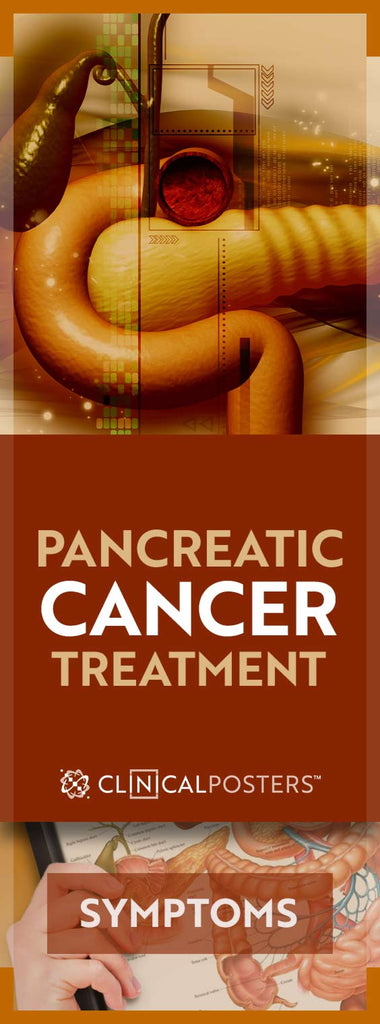A relative died within 2 weeks of stage-IV pancreatic cancer diagnosis. Is early detection possible?
Doctors Rarely See It Coming
Advanced symptoms are more difficult to ignore. The location of the pancreas, deep within the abdomen, makes early tumors difficult to detect by healthcare providers during routine physical examinations. Symptoms, if present, often go unnoticed until the cancer becomes very large or metastasizes. Stage IV is when cancer spreads to multiple organs.
The American Cancer Society expects more than 56,000 people to be diagnosed with pancreatic cancer and more than 45,000 to die from it this year. For all stages of pancreatic cancer combined, the one-year relative survival rate is 20 percent, and the five-year rate is about 7 percent.
Pancreatic Cancer Symptoms
- Jaundice (skin yellowing) and related symptoms
- Belly or back pain
- Weight loss and poor appetite
- Nausea and vomiting
- Gallbladder or liver enlargement
- Blood clots
- Fatty tissue abnormalities
- Diabetes
While pancreatic adenocarcinoma cancer survival rates have been improving in recent decades, it is, for the most part, incurable. Lacking public specificity, Alex Trebek, whose tumors have shrunk since the announcement of the disease, is thought to have pancreatic ductal adenocarcinoma.
Pancreatic neuroendocrine tumors (pancreatic NETs or PNETs) account for about 7 percent of all pancreatic tumors. They may be benign or malignant and they tend to grow slower than exocrine tumors (adenocarcinoma). The 5-year survival rate is about 60 percent—much higher if the cancer is found before it spreads to the lymph nodes or distant parts of the body.
Pancreatic Cancer Detection and Treatment
Sometimes, the first clue that someone has pancreatic cancer is a blood clot in a large vein (DVT), often in the leg. A family history of the disease (or family history of certain other cancers) may put some people at increased risk for pancreatic cancer. This is perhaps the most significant factor for early detection. People with a family history are more likely to request screening.
Changeable Risk factors
- Tobacco use
- Obesity (BMI 30+)
- Workplace exposure to certain chemicals
Unchangeable Risk factors
- Age (45+)
- Gender (male)
- African American
- Family history
- Inherited genetic syndromes
- Diabetes
- Chronic pancreatitis
The two most common tests used are endoscopic ultrasound and MRI. Genetic testing (identifying inherited conditions, not pancreatic cancer itself), looks for gene changes that cause such inherited conditions and increase pancreatic cancer risk.
Pancreatic Cancer Surgical Treatments
- Surgery for tumors in the pancreatic head. A Whipple procedure (pancreaticoduodenectomy) removes the head of the pancreas, the first part of the small intestine (duodenum), the gallbladder, and part of the bile duct. Part of the stomach and nearby lymph nodes may also be removed. The remaining parts of your pancreas, stomach, and intestines are reconnected to permit digestion.
- Surgery for tumors in the pancreatic body, tail and possibly the spleen.
- Surgery to remove the entire pancreas is called total pancreatectomy. You can live relatively normally without a pancreas but do need lifelong insulin and enzyme replacement.
- Surgery for tumors affecting nearby blood vessels. Few highly specialized surgeons perform pancreaticoduodenectomy with removal and reconstruction of parts of blood vessels in select patients.
Evolving treatments that use multiple agents formulated from gene-sequencing have shown more promise than single-agent chemotherapy. If you have a predisposition or feel you are manifesting any symptoms, see your healthcare professional to remain A Bit More Healthy.
To support the writing of scholarly articles about oncology, ClinicalPosters sells human anatomy charts, scientific posters, and other products online. You may sponsor specific articles or remit a small donation.
ClinicalPosters sells human anatomy charts, scientific posters, and other products online to offset expense of the writing useful articles about oncology. Slide extra posters into DeuPair Frames without removing from the wall.
Show your support by donating, shopping for ClinicalPins, or leaving an encouraging comment to keep the research going.
To support the writing of useful articles about oncology, ClinicalPosters sells human anatomy charts, scientific posters, and other products online. You may sponsor specific articles or remit a small donation.
ClinicalPosters sells human anatomy charts, scientific posters, and other products online to offset expense of the writing useful articles about oncology. Slide extra posters into DeuPair Frames without removing from the wall.
ClinicalPosters sells human anatomy charts, scientific posters, and other products online. You may remit a small donation.
You can support the writing of useful articles about oncology by sponsoring specific articles or remitting a small donation. Visible content is optimized for device size.







 Romance & Health Intertwine. Fall in love with a captivating romance miniseries that explores the essence of well-being. Become a ClinicalNovellas library member for heartwarming tales.
Romance & Health Intertwine. Fall in love with a captivating romance miniseries that explores the essence of well-being. Become a ClinicalNovellas library member for heartwarming tales.




